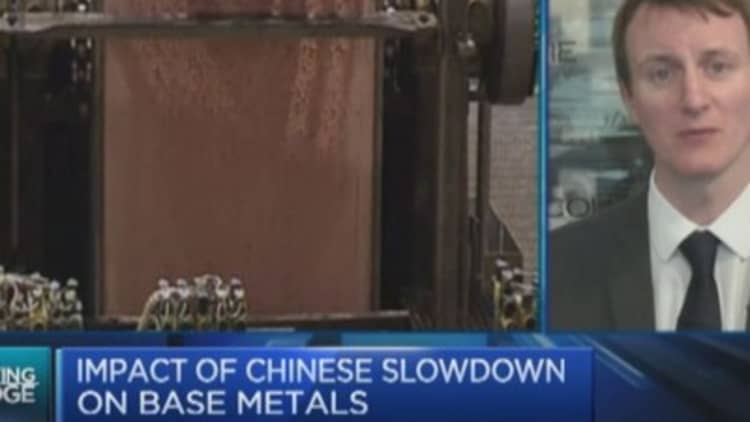Chinese demand for a wide range of commodities has been surprisingly strong this year despite worsening economic data, raising questions over how long the demand recovery can last.
For the first three months of the year, oil demand grew an annual 7.7 percent, its biggest gain in over two years while March iron ore imports soared 18.5 percent on month, snapping a two-month run of declines. Imports of refined copper metal rose to a four-month high last month, building on an 11.4 percent gain in copper consumption in February. And in the precious metals sector, March platinum imports jumped 26 percent on year, hitting their highest since December 2013.
The spike in demand seems at odds with recent growth indicators. Manufacturing activity in March remain in contraction territory while April's figure fell to a one-year low, according to HSBC's preliminary purchasing manager's index (PMI) survey. Meanwhile, industrial production logged its worst performance in March since the global financial crisis and first-quarter gross domestic product hit a six-year low.
According to Barclays, government spending on infrastructure is a key factor fueling demand for commodities, referring to the 300 infrastructure projects valued at $1 trillion slated for this year.
"While fixed asset investment growth in March slowed to 10.3 percent y/y, infrastructure investment rose 24.5 percent," the bank said in a report on Wednesday, adding that energy and metal intensive sectors like transportation, water conservation and public utilities, saw the biggest inflows.
The new Silk Road initiative is also attracting investment into transport infrastructure, supporting demand for related commodities, Arjen van Dijkhuizen, senior economist at ABN-AMRO, said last week Where things will go from here aren't clear, analysts say.
Read MoreTherisks behind China's growth gamble
While China's deliberate shift away from an investment-led economic model could dampen its demand for resources, aggressive monetary easing by policymakers could provide a buffer.

The People's Bank of China slashed its reserve requirement ratio, or the level of deposits banks must hold, by 100 basis points last week, its second cut since February.
"Looser credit conditions or fiscal stimulus may temporarily boost China's demand for coal, copper and iron ore but the bounce will be fleeting," Daniel Rohr, director of materials research at Morningstar, said in a note earlier this month.
Beijing's transition into a consumer-oriented economy will "diminish main demand growth engine for mined commodities globally," he added.
ABN-AMRO believes certain commodities face a greater threat of a slowdown, with industrial metal imports likely to see the biggest contraction as a result of economic rebalancing and the drive towards cleaner and more efficient production methods.
Read MoreWhy uranium is a smart investment: Experts
"We expect much lower growth rates going forward and for some industrial metals even import compression from time to time," said van Dijkhuizen.
Meanwhile, soft commodity imports like coffee and cocoa could buck the trend and keep rising thanks to a rise in average wealth levels and subsequent shift towards higher-quality consumption goods, he added.
Barclays, on the other hand, is more optimistic, expecting 2015 to be a better year for commodities than 2014.
"We suspect that it (demand strength) is likely to prove a high point for this year...extra government spending on infrastructure is real, as is the growth in car ownership and demand for air travel," the bank said.

